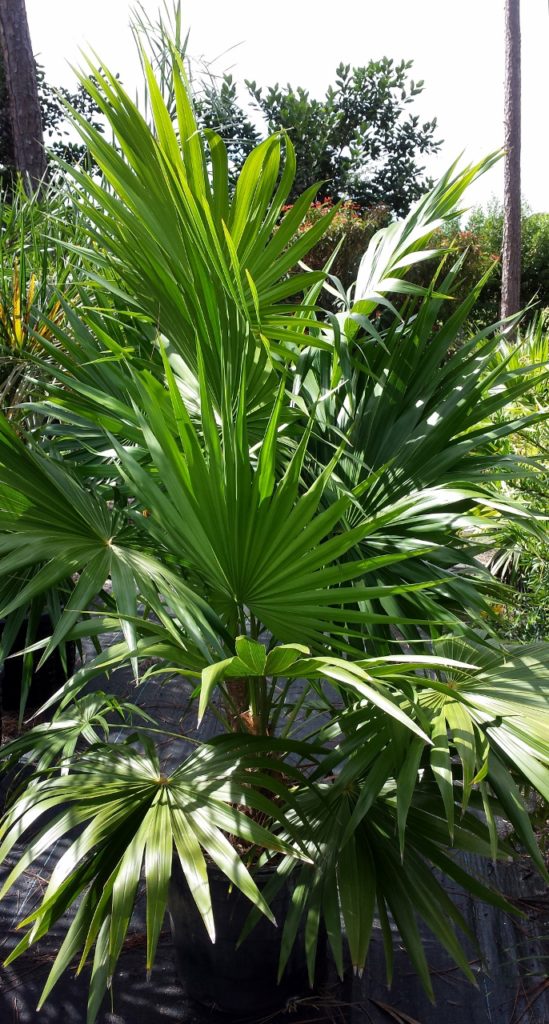
Florida Thatch Palm
Thrinax radiata
The Florida Thatch Palm is also known as Green Thatch Palm and is primarily native to the Monroe County Keys. It is the fastest growing of the three native thrinax palms and will develop a six foot or more trunk in just twenty years. The Key Thatch and Silver Palms will barely have two foot trunks in this amount of time.
The leaf blades are three feet across and have no silver or white on the underside. The leaf petiole is three feet long which means the tip of the leaflets extend four to six feet out from the trunk. When it has developed enough clear trunk, in about five years, other low plants like Coontie, Quailberry, Snowberry and low wildflowers can be planted underneath. Otherwise, just keep the area under the plant mulched.
Florida Thatch Palm will tolerate some salt air but not much salt water flooding. The stalks of white flowers attract butterflies and honey bees. These are followed by many quarter inch round white berries that squirrels won’t leave alone until gone. It is not hard to find twenty foot tall specimens growing in landscapes and natural areas of the Keys. Many are grown in Palm Beach County and beyond.
Do to its tolerance of some shade, this palm can be mixed into the interior of a hammock planting. Try one to several as an understory to Gumbo Limbo, Mastic, Paradise Tree, Pigeon Plum and other tall trees. Make sure it has room to grow upward without hitting a branch and plant low hammock shrubs ten feet away. This will allow the other plants to fill out and not crowd the palms.
In areas of full sun to partial shade, the Florida Thatch Palm can be mixed with the other native Thrinax Palms, Buccaneer palms, Sabal Palms and a backdrop of Blue Saw Palmetto. This gives a real Florida Keys or Bahamas look to the yard. It is also the larval food of the Monk Skipper butterfly.